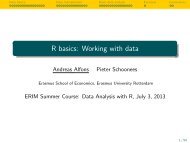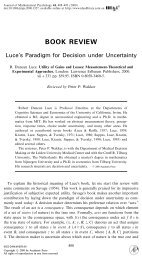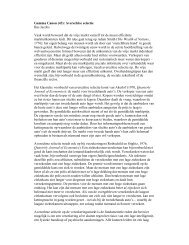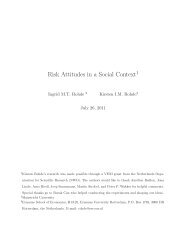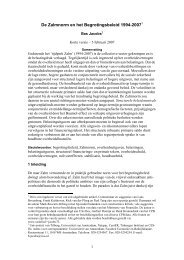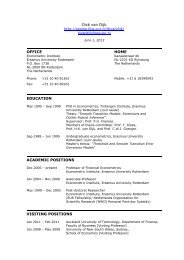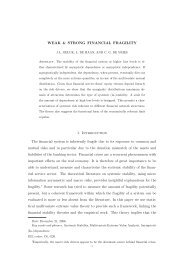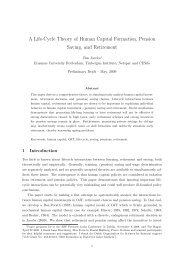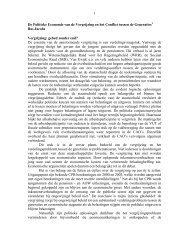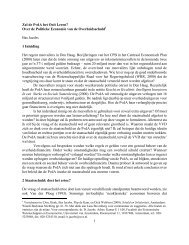Download PDF
Download PDF
Download PDF
Create successful ePaper yourself
Turn your PDF publications into a flip-book with our unique Google optimized e-Paper software.
12 % less than economic graduates in 1996 and 2002 respectively. Transport graduates earn<br />
12 % more than economic graduates in 1996 and this increased to 18 % in 2002.<br />
The samples used in Table 6.2 also includes graduates with a PhD-degree. To check for a<br />
possible bias of the results by this group we repeated all estimations for a sample excluding<br />
those with a PhD-degree. The results are quite similar. Since 1996, the relative wage position of<br />
S&E graduates at both levels of higher education has deteriorated against all other graduates. In<br />
addition, wages of S&E graduates strongly decline while compared to economic graduates at<br />
the university level and remain stable at the HBO level.<br />
Moreover, the previous estimates focus on monthly wages and do not take changes in fringe<br />
benefits into account. From 1996 onwards, the Wage Structure Survey also contains data on the<br />
fringe benefits received by the different graduates. We constructed a new wage variable<br />
consisting of the structural and incidental elements and repeated all estimations of Table 6.2.<br />
The results are quite similar, although the drop in wages since 1996 of S&E graduates<br />
compared to economic graduates has been 1 %-point larger.<br />
6.2.1 Wages of S&E graduates working in private R&D<br />
Using again data from the LSO (Wage Structure Survey), we estimate the wage differentials of<br />
graduates working in the private sector. Estimation results are given in Table 6.3, column (1). In<br />
column (2), we also report coefficients for S&E graduates working in R&D occupations. R&D<br />
occupations are defined as the more technical occupations, i.e. in science and engineering. We<br />
estimated the wage differential for later years only, due to a lack of data on sectors and<br />
occupations in the Wage Structure Surveys of 1979 and 1985.<br />
In Table 6.3, columns (1) present the estimates of the wage differential of graduates working<br />
in the private sector. In 1996 S&E graduates on average earned 4 % more at the university level<br />
and 8 % more at the HBO level than other graduates. In 2002 their wage position has<br />
deteriorated, at the university level they earn 4 % less than other graduates and at the HBO-<br />
level their wage advantage has decreased to 2 %. Hence, the findings are quite similar to the<br />
estimates in the top panel of Table 6.2, although the deterioration of the relative wage position<br />
of S&E graduates is stronger in the private sector.<br />
Columns (2) in Table 6.3 and Table 6.4 give an insight in the premium an S&E worker gets<br />
from working in R&D. We compare the wages of S&E graduates working in private R&D and<br />
the wages of other graduates in the private sector. This results in what we call the total wage<br />
differential. I.e. university S&E graduates who ended up working in private R&D earn in 2002<br />
1 % less than other university graduates working in the private sector. This total wage<br />
differential can be computed as the sum of the coefficient of S&E graduates and the coefficient<br />
of an interaction term. We can see that at both levels of higher education S&E graduates<br />
working in R&D earn more than other S&E graduates. The estimated R&D premium lies<br />
between 5 and 10 % and has been decreasing since 1996.<br />
61



